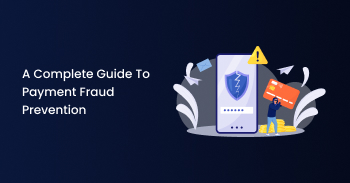Introduction
Ensuring compliance with Suspicious Transaction Reporting (STR) regulations is a priority for financial institutions worldwide. STR compliance helps detect and prevent money laundering, terrorist financing, fraud, and other illicit activities. While implementing an effective STR program is essential, it can also be costly for organizations. In this blog, we will explore cost-effective ways to meet STR compliance without compromising its effectiveness.
1. Automated Transaction Monitoring Systems
Investing in automated transaction monitoring systems can significantly reduce the cost of STR compliance. These systems use advanced technologies such as artificial intelligence and machine learning to analyze transactional data in real-time, flagging potentially suspicious activities. Automated systems reduce human error, increase efficiency, and save substantial time and resources for compliance teams.
2. Risk-Based Approach
A risk-based approach allows financial institutions to prioritize resources and allocate them where they are most needed. By analyzing customer data and segmentation, organizations can identify higher-risk customers and transactions that require closer scrutiny. This approach helps optimize resources and focus efforts on areas with the highest potential risk, reducing unnecessary compliance costs.
3. Continuous Employee Training and Awareness
Training and awareness play a crucial role in cost-effective STR compliance. Employees need to understand the importance of detecting and reporting suspicious transactions. Regular and comprehensive training programs can help develop employees’ expertise and ensure they are up to date with evolving threats and regulatory changes. By nurturing a strong compliance culture, organizations can minimize potential compliance breaches and lessen associated costs.
4. Collaborative Industry Partnerships
Collaboration between financial institutions and industry partners can effectively share the cost burden of STR compliance. By forming consortiums or participating in existing partnerships, organizations can pool resources, knowledge, and data analytics capabilities. Such collaborations enable sharing best practices, enhancing detection capabilities, and ultimately reducing individual compliance costs for all participating entities.
5. Outsource Non-Core STR Activities
Outsourcing certain non-core STR activities can be a viable option to lower costs. Many organizations find it cost-effective to leverage external expertise for activities such as data analysis, reporting, and compliance audits. Partnering with specialized STR service providers can provide access to extensive experience and knowledge without the need for heavy investments in infrastructure, technology, or personnel.
6. Utilize Regulatory Guidance
Understanding and utilizing regulatory guidance can optimize STR compliance efforts and ensure cost-effectiveness. Regulatory bodies often provide comprehensive guidelines, frameworks, and best practices specific to STR compliance. Financial institutions should closely follow these guidelines and leverage them to prioritize high-risk activities, develop streamlined processes, and establish effective control mechanisms.
Conclusion
Implementing a cost-effective STR compliance program requires a strategic approach that prioritizes risk, leverages technology, fosters a culture of compliance, and explores collaborative partnerships. By adopting automated systems, embracing risk-based approaches, investing in employee training, collaborating with industry partners, outsourcing non-core activities, and utilizing regulatory guidance, financial institutions can meet their STR compliance obligations without excessive financial burden. Ultimately, the primary goal remains safeguarding the integrity and security of the financial system while ensuring compliance is maintained in a sustainable and cost-effective manner.
by Sudesh Prabhu





